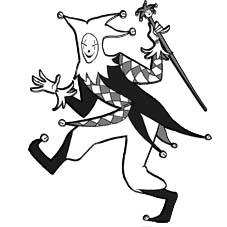Chapter 1: How to plan a point-of-view essay
This chapter covers the process of writing an essay. It summarises the key components of an essay and explains how to construct an argument: the introduction, body paragraphs (topic sentences), rebuttal and conclusion. See Chapter 1: A Paragraph Plan and Overview of Your Essay Goals
 Chapter 2: Reasoning strategies
Chapter 2: Reasoning strategies
This chapter encourages you to think about the range of tools that you, as an author, must use to mount a convincing argument. What is the evidence? It is imperative to have a firm grasp of the facts, analyse their significance, show connections and draw conclusions. You will also learn how to write sharper topic sentences and present the information as insightfully as possible.
It is important to present your ideas logically, and move from the abstract to the specific. You must use appropriate keywords and signposts to guide the reader through your discussion.
 Chapter 3: Persuasive strategies
Chapter 3: Persuasive strategies
A knowledge of persuasive techniques (tone, style, appeals, emotive and figurative language and colourful/dramatic words) will help you reinforce your argument and aim for an impact.
(See Sample Page.) and Chapter 3: A Typical Exercise.
A knowledge of common appeals will also help you identify key concepts and values.
You will learn how to use these strategies to write rebuttals, to attack your opponents and to expose their biases, pointing out why their views are misguided.
Chapter 4: Persuasive text types
This chapter outlines the features of typical persuasive texts such as an editorial, opinion article, letter to the editor, feature article and a speech. It encourages you to write your own based on a series of “Quick Guides”.
(See Sample Page.) and Hybrid Feature Style Essay
Chapter 5: Writing Better Sentences
Sentences are the building blocks of each paragraph and hence of your essays. This chapter outlines 10 typical grammatical pitfalls that you should avoid in order to write better sentences.
- To return to Summary page: Better Essays and persuasive techniques
- To return to e:licence and e-book summaries, please click here.
- To see the slideshow overview and lesson plans, please click here.
- To see the Lesson Plans, please click here.